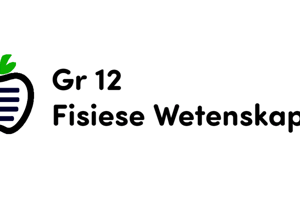Podcast
Questions and Answers
What is the mathematical relationship between voltage, current, and resistance in a conductor, according to Ohm's Law?
What is the mathematical relationship between voltage, current, and resistance in a conductor, according to Ohm's Law?
V = I × R
What is the difference between resistance and resistivity?
What is the difference between resistance and resistivity?
Resistance is the opposition to the flow of electric current, measured in ohms (Ω), while resistivity is the inherent property of a material, independent of its shape and size, measured in ohm-meters (Ωm)
What is the formula to calculate the total resistance in a series circuit?
What is the formula to calculate the total resistance in a series circuit?
Rtotal = R1 + R2 +...+ Rn
What is the characteristic of a parallel circuit in terms of voltage and current?
What is the characteristic of a parallel circuit in terms of voltage and current?
What is the unit of electric power, and what is the formula to calculate it?
What is the unit of electric power, and what is the formula to calculate it?
What is the formula to calculate the total energy transferred in a circuit?
What is the formula to calculate the total energy transferred in a circuit?
What is the difference between electric power and electric energy?
What is the difference between electric power and electric energy?
What is the formula to calculate the resistance of a conductor in terms of its resistivity, length, and cross-sectional area?
What is the formula to calculate the resistance of a conductor in terms of its resistivity, length, and cross-sectional area?
Flashcards are hidden until you start studying
Study Notes
Ohm's Law
- Relates voltage, current, and resistance in a conductor: V = I × R
- States that the current flowing through a conductor is directly proportional to the voltage applied across it, provided the resistance remains constant
- Mathematically represented as: I = V/R or R = V/I
Resistance and Resistivity
- Resistance (R): opposition to the flow of electric current, measured in ohms (Ω)
- Resistivity (ρ): inherent property of a material, independent of its shape and size, measured in ohm-meters (Ωm)
- Resistivity depends on the material, temperature, and other factors
- Formula: R = ρ × L / A, where L is the length and A is the cross-sectional area of the conductor
Electric Circuits
- A path through which electric current flows
- Consists of various components, such as resistors, capacitors, and sources of electromotive force (emf)
- Can be classified into:
- Series circuits: components connected one after the other, current flows through each component
- Parallel circuits: components connected between the same two points, voltage across each component is the same
Series and Parallel Connections
- Series Connection:
- Total resistance: Rtotal = R1 + R2 + ... + Rn
- Total voltage: Vtotal = V1 + V2 + ... + Vn
- Current: I is the same throughout the circuit
- Parallel Connection:
- Total resistance: 1/Rtotal = 1/R1 + 1/R2 + ... + 1/Rn
- Total voltage: Vtotal = V is the same across each component
- Current: I = I1 + I2 + ... + In
Electric Power and Energy
- Electric Power (P): rate of energy transfer, measured in watts (W)
- Electric Energy (E): total energy transferred, measured in joules (J)
- Formula: P = VI, where V is the voltage and I is the current
- Energy consumption: E = Pt, where t is the time
- Units of power: kW (kilowatt), MW (megawatt), GW (gigawatt)
- Units of energy: Wh (watt-hour), kWh (kilowatt-hour), MWh (megawatt-hour)
Ohm's Law
- Relates voltage, current, and resistance in a conductor using the formula: V = I × R
- Describes the direct proportionality between voltage and current, with resistance as the constant of proportionality
Resistance and Resistivity
- Resistance (R): measured in ohms (Ω), opposes the flow of electric current
- Resistivity (ρ): inherent property of a material, measured in ohm-meters (Ωm), dependent on material, temperature, and other factors
- Formula: R = ρ × L / A, where L is the length and A is the cross-sectional area of the conductor
Electric Circuits
- A path through which electric current flows, composed of various components
- Classified into:
- Series circuits: components connected one after the other, with current flowing through each component
- Parallel circuits: components connected between the same two points, with voltage across each component being the same
Series and Parallel Connections
- Series Connection:
- Total resistance is the sum of individual resistances: Rtotal = R1 + R2 +...+ Rn
- Total voltage is the sum of individual voltages: Vtotal = V1 + V2 +...+ Vn
- Current is the same throughout the circuit: I
- Parallel Connection:
- Total resistance is the reciprocal of the sum of individual reciprocals: 1/Rtotal = 1/R1 + 1/R2 +...+ 1/Rn
- Total voltage is the same across each component: Vtotal = V
- Current is the sum of individual currents: I = I1 + I2 +...+ In
Electric Power and Energy
- Electric Power (P): rate of energy transfer, measured in watts (W), calculated using the formula: P = VI
- Electric Energy (E): total energy transferred, measured in joules (J), calculated using the formula: E = Pt
- Units of power: kW (kilowatt), MW (megawatt), GW (gigawatt)
- Units of energy: Wh (watt-hour), kWh (kilowatt-hour), MWh (megawatt-hour)
Studying That Suits You
Use AI to generate personalized quizzes and flashcards to suit your learning preferences.




